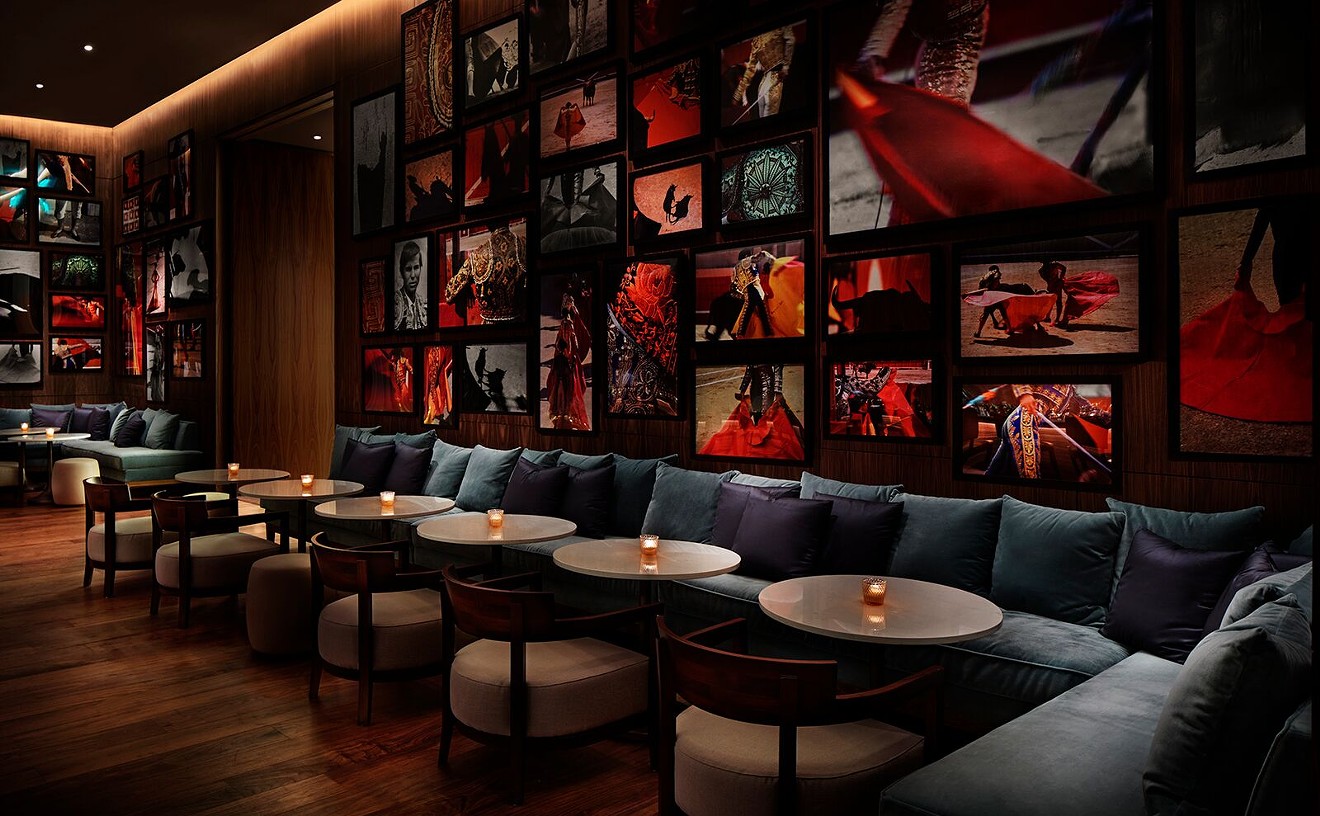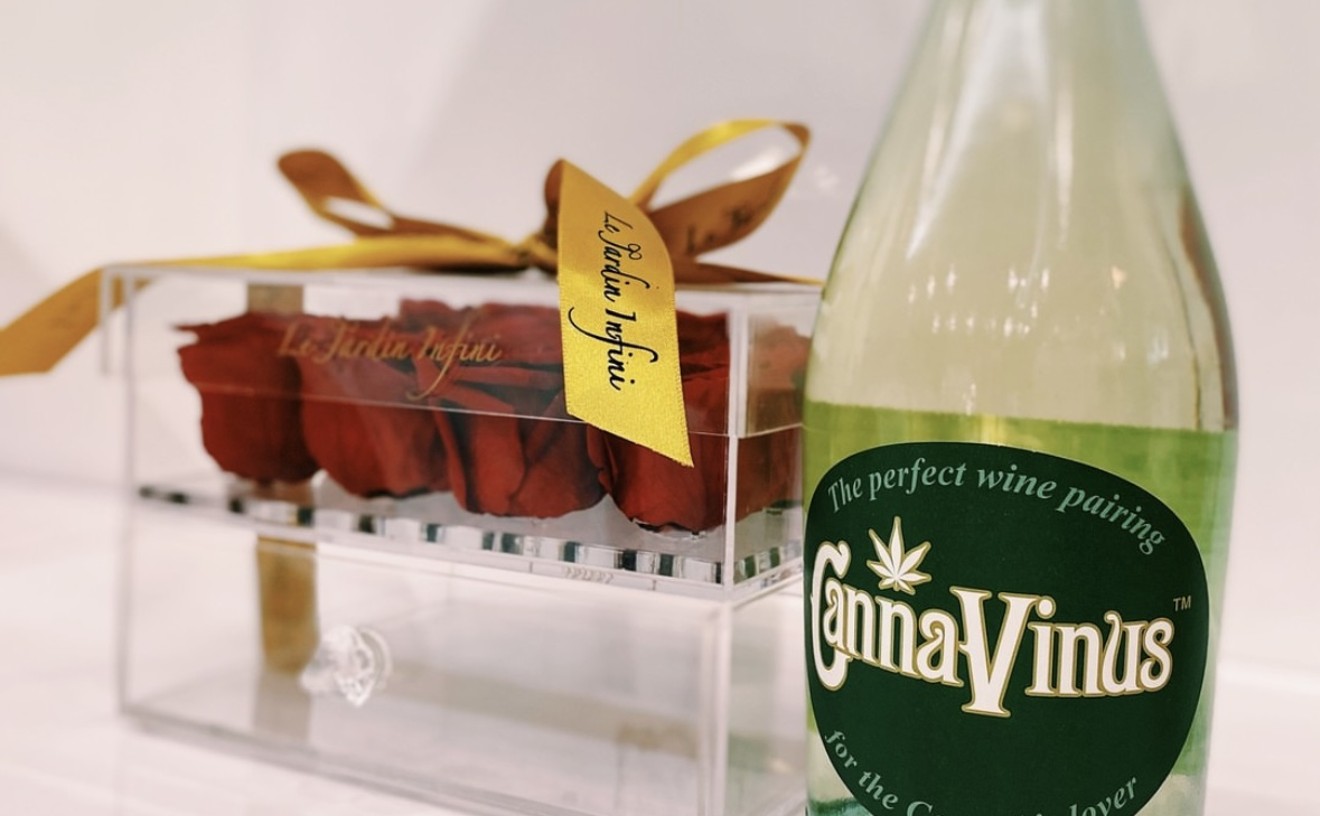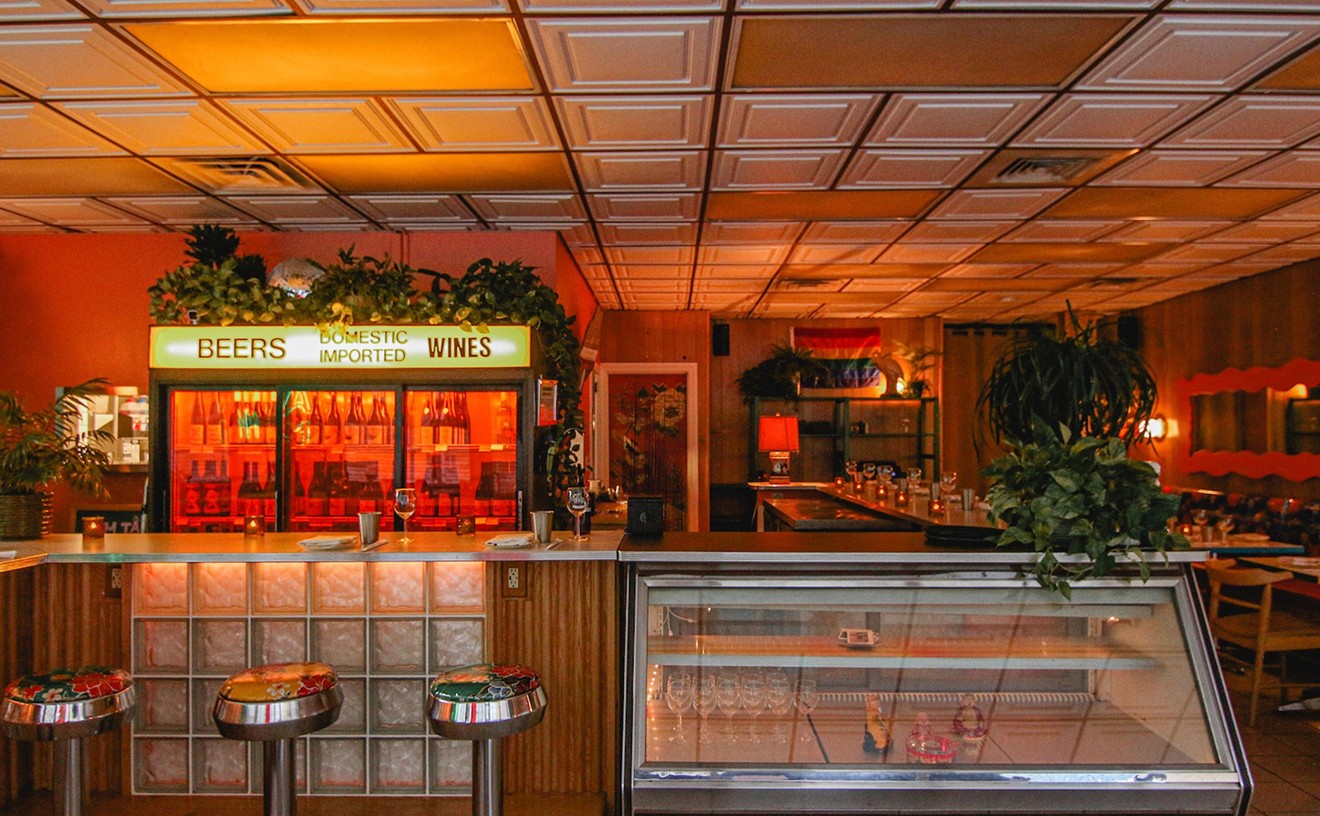Actually, this scenario is not uncommon. As far as I can see, when partners dissolve their relationship, there are two ways to go: Either the couple-to-not-be sells the joint property and divides the proceeds, or one party gets real estate and the other gets screwed. If it ever comes to that, my hubby and I vowed, we'll be decent to each other: He can have the orange tabby and the gray cat, and I'll keep the black one and the calico. We might fight over the fifth cat, the feral tortoiseshell who won't come out from under the bed, but unless she abandons her post, she'll most likely be sold with the house.
A business partnership, so similar to a marriage, can terminate civilly. It helps, of course, if the assets can be divided evenly. (Which is why I'm always telling my husband we need either a sixth cat or a second house.) Take the case of Jonathan Eismann and Yves Picot, former co-proprietors of Pacific Time on South Beach and the year-old Pacific Heights in Coral Gables. Two men, two properties. When they decided to go their separate ways five months ago, no brutal battle ensued, no mud-slinging. Simply a quiet announcement to the press: Eismann would wind up with Pacific Time (where he's also the chef), Picot with Pacific Heights.
Eismann has always maintained that the separation was amicable. Picot agrees that they still have a healthy respect for each other and cites the pressure of opening a restaurant in Coral Gables as the main reason for the split. I don't doubt the stress. Trying to obtain permits in that city could drive anyone to road rage. Still, judging from the undertones that surfaced during conversations with both men, I'd surmise that creative differences and ego clashes were among the forces that drove them apart. Not to mention the third party (there's always a third party!), Alex Duff -- a silent investor who became a working partner at Pacific Time in the year or so before the split. Though Duff never had a vested interest in Pacific Heights, it's tough to draw a straight line between two people when there's a third lurking somewhere in the background.
And even the friendliest divorce isn't completely bloodless. Eismann probably lost the most plasma: Not only did he buy his way clear from Pacific Heights, he bought both partners out of Pacific Time. He also felt wounded by Duff's latest project -- a close copy of Pacific Time (called Pacific East) that opened in the Hamptons a few months ago with the help of chef Michael A. Castino, former chef de cuisine at Pacific Time.
If there was any damage to either party, though, it appears not to have been nearly fatal. Pacific Time seems to be doing a bustling business. And across the causeway Picot is getting Pacific Heights into top shape with several interesting and welcome changes.
Transition begins with the name, which is on its way to becoming The Heights. Picot doesn't have a contractual imperative to drop Pacific from the appellation, so the transfer has been slow (directory assistance still calls the restaurant by its original name, as do Picot's business cards, matchbooks, et cetera). Unlike Duff, Picot, who owned A Fish Called Avalon on South Beach before selling it in 1993 and going into business with Eismann, does want to distance himself and his eatery from Pacific Time. Until he paints over the exterior sign, however, that may be a little difficult.
The menu, and its creator, make the distinction more apparent. Picot ousted executive chef Frank Jeannetti, an Eismann protege, and promoted Frank Randazzo, who had been Jeannetti's sous chef. According to Picot, originality prompted the switch: Randazzo had his own ideas, whereas Jeannetti's were recycled. The results are an aggressive, spicy bill of fare that relies as much for inspiration on the Southwest as it does on Asia.
Dinner begins with crumbly, buttery jalapeno cornbread (on the house) and well-mixed martinis (not on the house but a bargain if you get there between 5:00 and 7:00 p.m. for happy hour). The cornbread, quickly replenished when depleted and partnered with a chili-spiced butter, sets the stage for peppery appetizers such as tuna carpaccio with green and red chili oil, pickled onion, and mizuna-citrus salad; chili-crusted quail with warm scallion wheat berry salad and jalapeno-orange sauce; and grilled marinated prawns in fennel, ginger, and shrimp broth with watercress, tomato, and cilantro.
We went a more subtly spiced route, however, picking a terrific goat cheese and vegetable timbale to start. Served warm but not melted, the creamy goat cheese was mixed with roasted zucchini and beets, then shaped into a round mold. Walnuts added autumn flair, as did a sweet-tangy pickled beet vinaigrette.
Spiced walnuts, almost candied, were also an accent on a hot appetizer, the pan-seared foie gras. "Duck or goose?" I asked the waiter.
"Goose," he replied unhesitatingly.
Not only was I pleased with the fact that the foie gras was the real thing, I was happy with the quickness of his response. He understood what I was talking about, and he obviously knew what he was doing -- a fact he continued to prove, albeit a bit flamboyantly, throughout the evening, by announcing his recommendations for each course. He went so far as to drape a napkin over my side of the table after I stained the white tablecloth with broth from the duck confit soup I ordered, so I wouldn't have to look at the "distressing" stains while I finished my meal.
That soup, incidentally, was the one appetizer I didn't care for, which is probably why half of it wound up on the tablecloth. The duck confit, shredding in the broth and soaking up the liquid, tasted too much like pot roast, and the broth itself was sour and a little too spicy.
The duck's mediocrity made us even happier with the goose. Pan-fried to a melting crispness, the foie gras slice was laid over a blue corn pancake studded with chilies and topped with diced sauteed pear, the fruity acidity relieving some of the richness. Port wine and red chili oil drizzles enhanced the plate, providing splashes of color as well as flavor.
Entrees were somewhat uneven: In some cases the main dish was ideal and the sides detracted, while in others the opposite was true. Both New Mexican chili-encrusted tuna and ancho grilled beef tenderloin medallions proved succulent successes. The tuna was a generous fillet seared on the outside and rare in the interior. But the somen noodles that accompanied it, garnished with sauteed baby bok choy, tempura-battered cactus, and green chilies, had so much ginger in their ponzu broth that they were hard to swallow. Likewise, the medallions, more like a pair of hunky filet mignons, were fantastic, musky, gristle-free beef. And while a crunchy wedge of leek and potato crisp was nicely browned, a gold against the maroon of meat, the rest of the stuff was a jumble: peeled and roasted baby carrots, miniature squash, a pile of spinach, and soy-braised portobello mushroom pieces that tasted as if they'd been soaked for days in enough balsamic vinegar to preserve a mummy.
On the flip side, a duck breast was a little shriveled and too fatty, though it had a pleasant aroma from the grill. But its accomplices -- soft polenta and a braised whole Japanese eggplant -- sharpened things up, their complementary textures highlighted by the perfect resistance of grilled shiitake mushrooms. A chipotle demi-glace drew all the components together. The same was true of the creamy scallion-ginger sauce blanketing the side dish that accompanied blue corn-coated grouper. The fish itself, a hefty fillet, was chewy and old, its fishiness apparent despite the cornmeal breading. But a delicate spinach stir-fry helped, and sweet potato ravioli actually compensated for the disappointing grouper. These plump nuggets were mouthwatering, napped with the tangy sauce.
Another disintegrated partnership became evident with dessert: Kevin Kopsick, long-time pastry chef at Norman's, is now at The Heights. I feel for Norman Van Aken. Bittersweet chocolate mousse cake with banana chocolate sorbet and caramelized bananas was luscious, while a pistachio-butterscotch brownie, dense and sweet and topped with mango ice cream and spice cookie shards, was a disappointment only in that it was too small.
Chef Randazzo, whose style reminds me more than anything of Robbin Haas (who is now cooking at Bex, a new restaurant in Boca Raton), has some smoothing out to do; like Haas, he'll take a risk for a big payoff. Perhaps girlfriend Andrea Corto, who worked under pastry chef Jennifer Warren at Pacific Time, filled in as pastry chef at The Heights, and now works the line there, can keep him on an even keel. As customers, we certainly hope that all these relationships -- owner to chef, chef to line cook, and line cook to pastry chef -- hold for the future.
Oh, and P.S. to my in-laws: Only kidding about the divorce thing.
The Heights
2530 Ponce de Leon Blvd, Coral Gables; 461-1744. Dinner Monday -- Thursday from 6:00 to 11:00 p.m. (bar opens at 5:00), Friday and Saturday until midnight, and Sunday from 5:00 to 10:00 p.m.
Goat cheese timbale
$11.00
Chili-crusted tuna
$24.00
Beef tenderloin medallions
$25.50
Bittersweet chocolate mousse cake
$7.50










